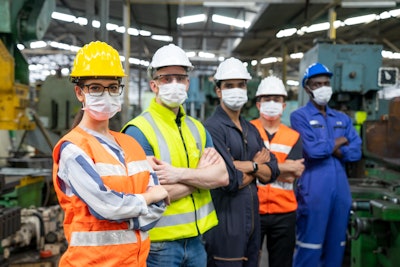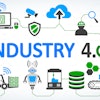
A new report released today by MHI and Deloitte finds that 74% of supply chain leaders are increasing their supply chain technology and innovation investments, with 90% saying they are planning to spend over $1 million, an increase of 24% over last year. Meanwhile, 36% plan to spend over $10 million, up 19%.
“Responsible supply chains must react in real-time to changing conditions; this requires actionable data, automation and automated decision-making,” says John Paxton, CEO of MHI. “Tech investment is only part of the equation. Having an innovative culture and the right people in place to implement innovation and to bring it all together to exceed your customer demands and expectations – whether they are fast delivery, personalization, low cost, delivery transparency or sustainability goals.”
From BusinessWire:
- Hiring and retaining qualified workers (57%) and the talent shortage (56%) were the top supply chain challenges cited by survey respondents. However, this was followed closely by supply chain disruptions (54%), out-of-stock situations (52%) and customer demands (52%).
- 41% of respondents are reskilling/upskilling workers for emerging technologies, 34% are recruiting for skillsets for future needs and 27% are working to create a culture of innovation.
- 49% are partnering with vendors to understand application/benefits and 31% are piloting new technologies.
- Nearly half of this year’s survey respondents (48%) say they face increased influences to adopt a more sustainable supply chain. The pressure is coming from many angles, including consumers, regulators, industry groups, traditional and social media, and other stakeholders that increasingly expect brands and their supply chains to adhere to their own high standards.
- The top focus areas for sustainability are electrification (40%), natural resource management (29%), water usage (27%) and transition to renewables (27%). However, only 23% of respondents have made Scope 3 emissions a top focus of their sustainability efforts.
- Adoption of these categories of technology are predicted to rise dramatically over the next five years. They include:
Inventory and Network Optimization – 87%
Cloud Computing and Storage – 86%
Sensors and Automatic Identification – 84%
Advanced Analytics – 82%
Wearable and Mobile Technology – 80%
Robotics and Automation – 78%
3D Printing – 75%
Artificial Intelligence – 73%
Internet of Things – 68%
Blockchain – 68%
Driverless Vehicles and Drones – 66%
“As leaders, we must drive transparency and coordinate change across the end-to-end supply chain as we work collaboratively to reduce Scope 3 emissions and move toward the circular economy,” says Paxton. “Sustainability will become a key competitive advantage for in the future. Investments in sustainability and transparency help reduce risk exposure and build loyalty with customers and employees alike.”
“Supply chain companies embarking on their sustainability journey will need input from across their organization to support reporting,” says Wanda Johnson, specialist leader, Deloitte Consulting. “Embracing circularity, reducing environmental impacts, regenerating nature, and embedding equity should all be coded to their DNA and driven from the top down for them to be successful.”






![Pros To Know 2023 [color]](https://img.sdcexec.com/files/base/acbm/scn/image/2023/02/ProsToKnow_2023__color_.63e68012d6d71.png?auto=format%2Ccompress&fit=crop&h=167&q=70&w=250)













![Pros To Know 2026 [color]](https://img.sdcexec.com/mindful/acbm/workspaces/default/uploads/2025/08/prostoknow-2026-color.mduFvhpgMk.png?ar=16%3A9&auto=format%2Ccompress&bg=fff&fill-color=fff&fit=fill&h=135&q=70&w=240)